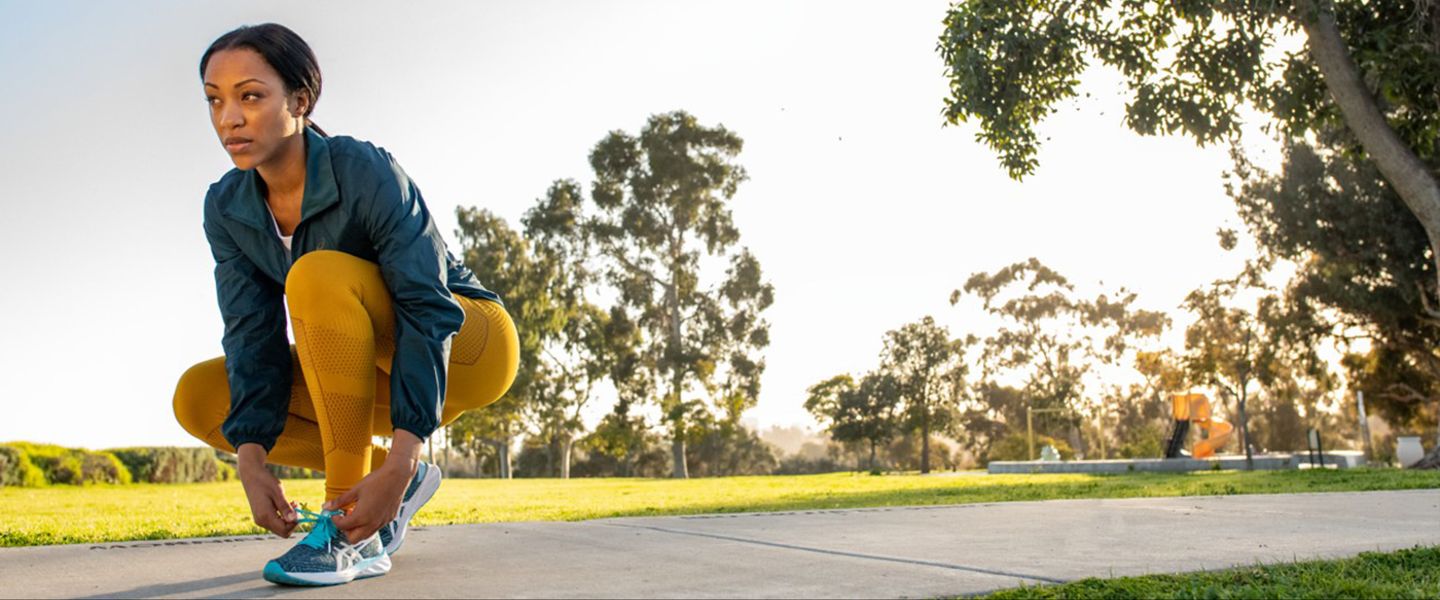Comfortable running shoes are shoes that fit well, but how do you find the proper running shoe fit?
Since you spend a lot of time in a pair of running shoes, it's worth getting to know your personal running style. A pair of running shoes that fit well varies from person to person. Consider the following when shopping for the most comfortable running shoes:
- Shoe width and the shape of your foot
- Type of running terrain
- Running gait, including foot pronation
This guide will show you how to find proper fitting running shoes for your running style.
How to know if your running shoes don’t fit properly?
It’s easy to tell if your running shoes are a proper fit or not by simply looking at your feet. Are there signs of wear and tear? An ill-fitting pair of running shoes can also affect your knees, hips and back. Try not to choose a pair of running shoes based on looks alone; go by feel. Here are some telltale signs your shoes are an incorrect fit:
- Bruises on your toes – indicate a shoe that’s not big enough. Give yourself extra toe room and consider buying running shoes a size bigger to compensate for foot spread.
- Blisters on your toes – means your shoes are too tight. Always allow for extra room as your foot expands the longer you run. A half size bigger shoe could solve the problem.
- Blisters on your heels – occur when your heel is not secure and slips around in your shoe. Choose a shoe with a narrow heel cup for extra support.
- Blisters on the ball of your foot – happen when your shoes are too wide, and your foot bed slides around upon impact.
How to choose running shoes that fit
Getting to know your own personal running style will save you wasting money on the wrong pair of shoes. The right running shoe should offer heel and mid-sole support and enough toe room to get you through your run in comfort. From gait analysis to running terrain, here are some tips to help you find the proper running shoe fit:
1. First, choose the right type of shoe
Will you be road running, running on a purpose-built track or perhaps on a forest trail? All these surfaces require a different kind of shoe. Another basic distinction is between racing and training shoes. Comfortable running shoes can be worn on more than one type of terrain but knowing where you’ll be spending most of your run can help you determine how your shoes should fit to allow for comfort.
2. Find out what your pronation type is
Pronation is the term used to describe the way your foot rolls when you walk and run. Essentially, when buying any kind of sports shoe, you should know your pronation type first. Each shoe on the market is suitable for a type of pronation.
You can find out what your type is by getting an expert gait analysis done for you – visit us in-store, where we offer this service as part of your shoe fitting. Knowing how your feet move when you run can make all the difference in the comfort of your run.
Understand more about pronation in our easy-to-understand pronation guide, and learn how to spot running shoes for supination and pronation.
3. Make sure you have extra room for your toes.
Keep an open mind with your shoe size and remember the following: your foot will need more room the more you run. You may wonder; should running shoes be a size bigger than your regular shoe size?
The further you run the more your foot will naturally expand. This means it's wise to have just a little extra room (about a thumb’s width) between your longest toe and the front of the shoe. With this in mind, your running shoe should be around a half size larger than the shoe size you usually get. Making sure there is enough space in the toe box of your shoe can give you the room you need for those long runs without any unnecessary discomfort.
4. Check the pressure on the sides of your feet
The width of your shoe is equally as important as the length when it comes to a proper running shoe fit. People have a variety of foot shape and width, and often have wider or narrower feet than some of the standard shoe sizes. With both narrow and wide shoes available at ASICS online and in-store, you can find an excellent fit for your foot.
5. Check the weight of the running shoe
Weight refers to two things:
- The runner’s weight - if you are a heavy or bigger built runner then you may need more supportive shoes.
- The shoe’s weight – generally, since you are going to be wearing your shoes for many kilometers, the lighter they may need to be to allow for a more comfortable run.
6. Try the shoes on in the evening and wear socks
To choose the right fit for your running shoes, try them on in the evening (when your foot is slightly bigger) and try them on with running socks. The best option is to find an ASICS store near you, with late night trading hours to get fit for your foot.
There is a wide range available, with socks which are specifically designed for running and vastly improve the feeling of comfort and support inside the shoe.
Now that you know all about how your running shoes should fit, check out our wide selection of comfortable running shoes from ASICS.
